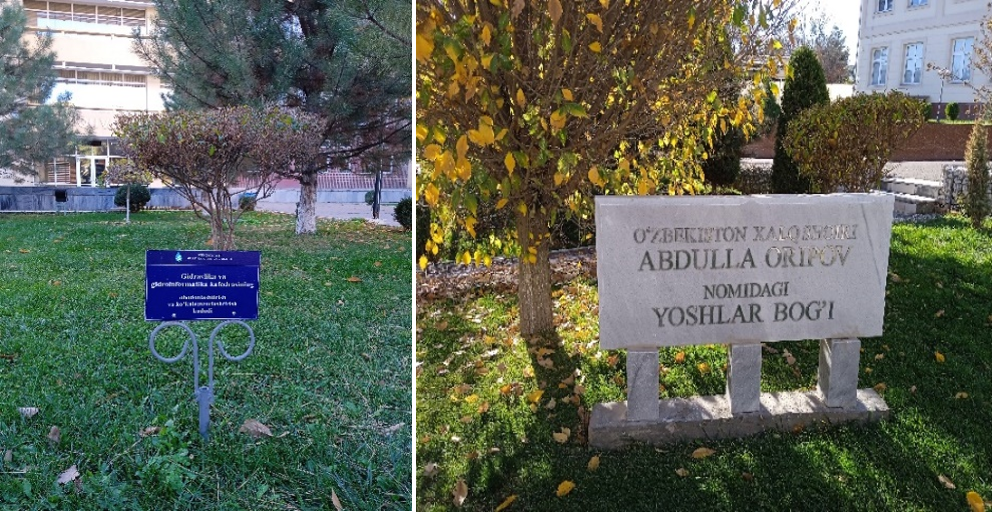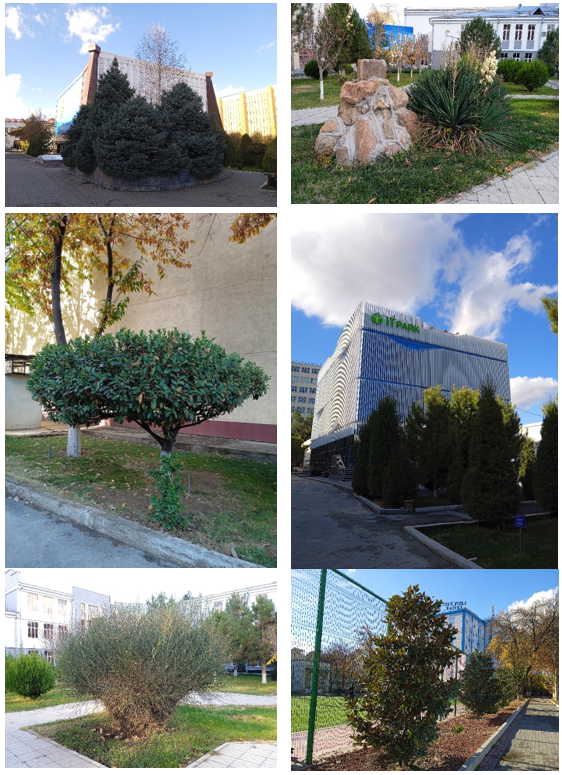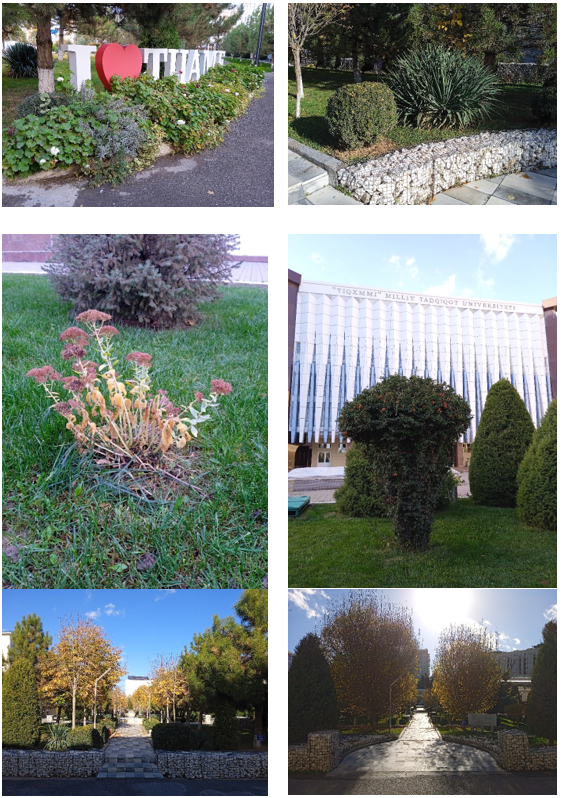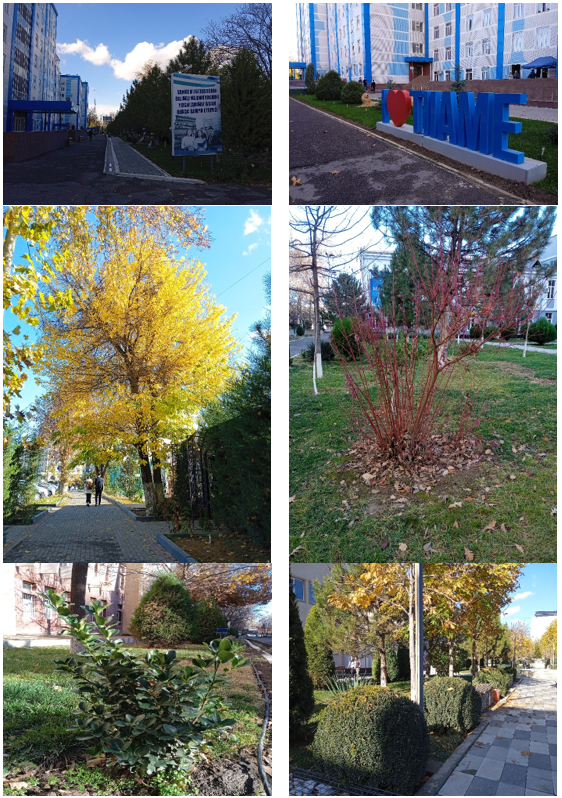Water-conscious planting
Recognizing the arid climate and limited rainfall in Uzbekistan, TIIAME National Research University has developed innovative landscaping practices to create a sustainable and aesthetically appealing campus environment. By prioritizing drought-tolerant and low-water-demanding plants, we align with our commitment to sustainable development and responsible water use.

Key Principles of Water-Conscious Landscaping
1. Adapting to Uzbekistan’s Arid Climate:
o TIIAME focuses on cultivating plants that thrive in low-water conditions, ensuring the efficient use of water resources.
o This proactive approach reflects the university's commitment to mitigating the challenges posed by limited rainfall and climatic conditions.
2. Drought-Tolerant Flora:
o The university campus features a wide variety of drought-resistant plants, including:
§ Sycamore Trees: Renowned for their resilience and adaptability.
§ Pine Trees: Evergreen and low-maintenance, enhancing the campus's greenery.
§ Junipers: Hardy and water-efficient, ideal for arid environments.
§ Yucca Plants: A unique addition to the landscape with minimal water requirements.
§ Boxwood: Versatile and commonly used for decorative and practical purposes.
3. Youth Park: A Landmark of Sustainability:
o The Youth Park, named in honor of the celebrated Uzbek national poet, Abdulla Oripov, stands as a vibrant example of sustainable landscaping.
o This space is adorned with drought-tolerant plants, creating a serene and environmentally responsible area for reflection and recreation.
4. Green Spaces Across Campus:
o Green spaces in front of each building are divided into sections, with individual departments taking responsibility for their maintenance.
o This unique system fosters a sense of ownership and ensures meticulous care for the university’s gardens.
5. Innovative Plant Management:
o Each tree and plant is equipped with a QR code, enabling efficient inventory and monitoring of campus flora.
o This modern solution enhances plant management while supporting the university's sustainability goals.
Sustainable Landscaping Practices
· Irrigation Systems:
o Advanced irrigation techniques are employed to minimize water usage while ensuring plant health.
· Plant Selection:
o The intentional choice of drought-tolerant species reduces dependency on irrigation, promoting long-term sustainability.
· Community Engagement:
o Faculty, students, and staff are actively involved in the care and maintenance of the campus landscape.
Impact of Water-Conscious Landscaping
· Water Conservation:
o Reducing water usage through strategic plant selection and irrigation methods.
· Environmental Responsibility:
o Promoting biodiversity and a sustainable campus ecosystem.
· Enhanced Aesthetics:
o Combining functionality and beauty, the landscaping contributes to a welcoming and inspiring campus environment.
Examples of Drought-Tolerant Plants at TIIAME
Plant Type | Examples | Key Features |
Trees | Sycamore, Pine, Juniper | Resilient, evergreen, and low-maintenance. |
Shrubs | Boxwood, Yucca | Versatile, water-efficient, and visually appealing. |
Ornamentals | Seasonal perennials | Adaptable to local conditions and climate-friendly. |
Examples of low-water-demanding and drought-tolerant plants within the university campus:




